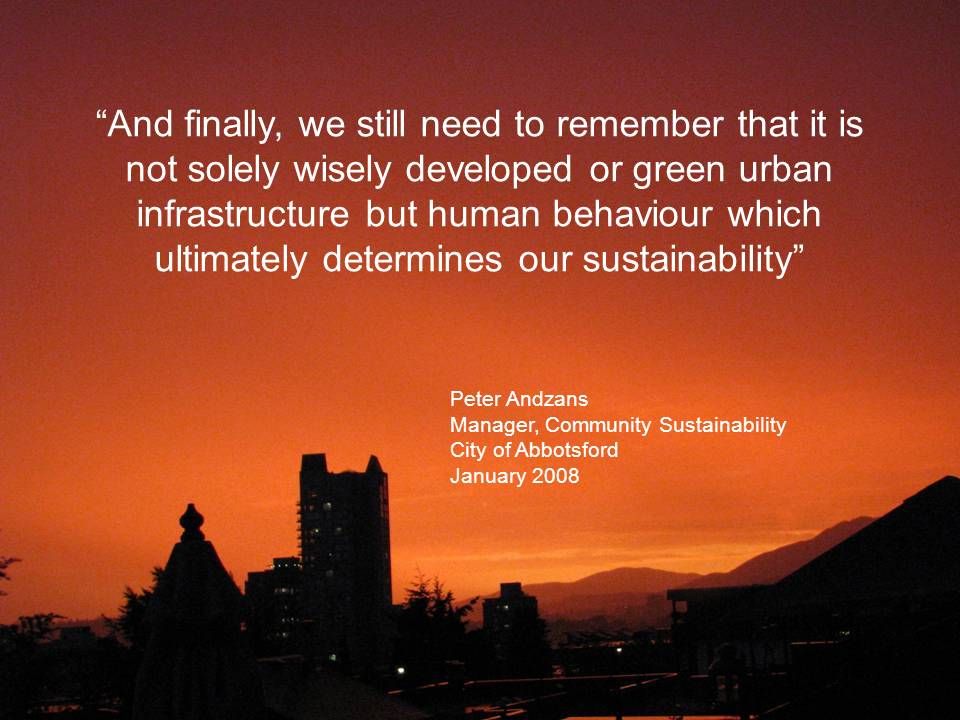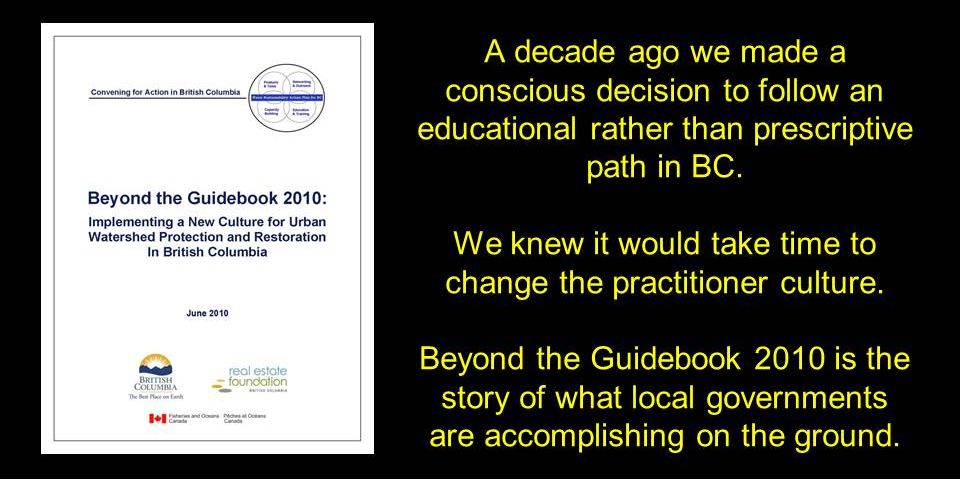CONVENING FOR ACTION IN BRITISH COLUMBIA: 2010 was a ‘watershed year’ for the Water Sustainability Action Plan, with outreach taking place at 10 major events in three regions, to provide peer-based learning for Living Water Smart, Building Greener Communities, and Adapting to a Changing Climate
Note to Reader:
Released in February 2004, the Water Sustainability Action Plan for British Columbia demonstrates what can be achieved through a ‘top-down & bottom-up strategy’. It was an outcome of collaboration between the provincial government and the Water Sustainability Committee of the BCWWA. Known as the WSC, the committee ultimately morphed into a stand-alone and independent legal entity – that is, the Partnership for Water Sustainability in British Columbia (“the Partnershp”).
In retrospect, 2010 was a milestone year for ‘convening for action’ under the umbrella of the Water Sustainability Action Plan for British Columbia. Much was accomplished in an extremely busy year. In the months leading up to its incorporation as a non-profit society (in November 2010), the Partnership organized and provided program development for three flagship events under the umbrella of CAVI, Convening for Action on Vancouver Island.
The Partnership also delivered program components within seven other major events organized by other organizations. The latter events were held in three regions, namely: Vancouver Island, Metro Vancouver and the Okanagan.
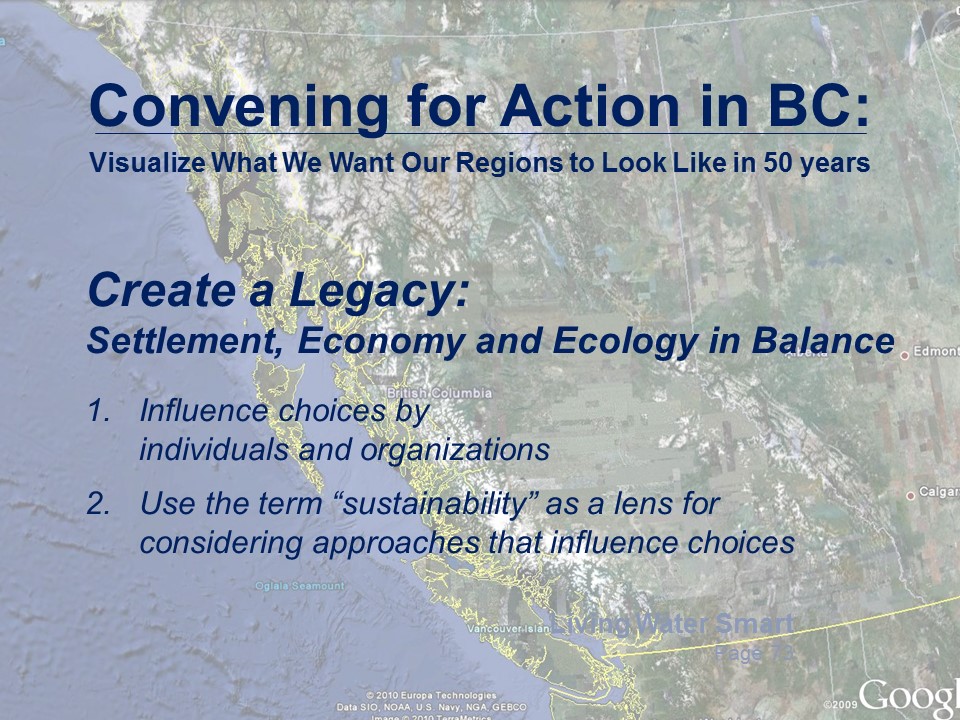
Implementing a New Culture for Urban Watershed Protection and Restoration in British Columbia
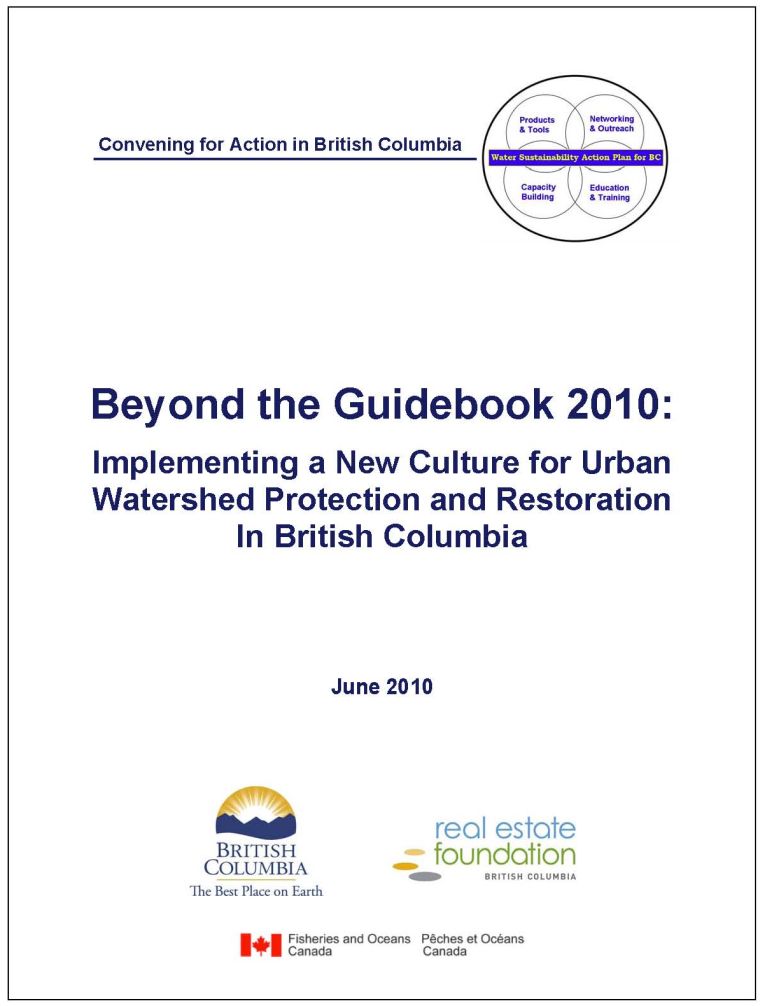 The Partnership’s outreach spotlight in 2010 was on the release and rollout of the second in the Beyond the Guidebook series of guidance documents for rainwater management and restoration of hydrologic function in urban watersheds.
The Partnership’s outreach spotlight in 2010 was on the release and rollout of the second in the Beyond the Guidebook series of guidance documents for rainwater management and restoration of hydrologic function in urban watersheds.
Stormwater Planning: A Guidebook for British Columbia, released in June 2002, laid the groundwork for ‘designing with nature’ to create greener communities, live water smart and prepare for climate change. Beyond the Guidebook 2010 built on the Guidebook foundation and illustrated how breakthroughs happen when decision-makers in government collaborate with grass-roots visionaries in the community.
Beyond the Guidebook 2010 describes how a ‘convening for action’ culture has taken root in British Columbia. Bringing together local government practitioners in neutral forums has enabled implementers to collaborate as regional teams. Their action-oriented focus has resulted in ‘how to do it’ examples that help decision-makers visualize what ‘design with nature’ policy goals look like on the ground.
To Learn More:
Download a copy of Beyond the Guidebook 2010: Implementing a New Culture for Urban Watershed Protection and Restoration in British Columbia
Visit the Beyond the Guidebook 2010 dropdown on the Rainwater Management community-of-interest.

Flagship events held under the umbrella of the Water Sustainability Action Plan in 2010
2010 Bowker Creek Forum (held at University of Victoria, February)
The Bowker Creek Forum was an opportunity to learn about urban watershed management successes and challenges from the Bowker Creek Initiative, and celebrate the 100-year Action Plan for implementing the Bowker Creek Blueprint.
The Forum facilitated sharing of information about successful approaches, so that they could be replicated in other jurisdictions. While the spotlight was clearly on the Bowker Creek Blueprint, local government representatives from Metro Vancouver and ‘north of the Malahat’ also shared their experiences related to achieving watershed-based objectives.
Create a Legacy Through Collaboration
 “The role that community groups have played in Blueprint development is impressive. Speaking from experience, it sends a powerful message when community representatives are motivated by the common good and are in a position to express their commitment in terms such as these: we live here, and we are passionate about the legacy and the quality of life that we leave for our children and grand-children,” stated Kim Stephens, Partnership Executive Director, and the program lead for the Action Plan from inception through development through implementation.
“The role that community groups have played in Blueprint development is impressive. Speaking from experience, it sends a powerful message when community representatives are motivated by the common good and are in a position to express their commitment in terms such as these: we live here, and we are passionate about the legacy and the quality of life that we leave for our children and grand-children,” stated Kim Stephens, Partnership Executive Director, and the program lead for the Action Plan from inception through development through implementation.
“It is essential that their story be told so that others will be inspired to follow the lead of the Bowker Creek Initiative. Simply put, transformational change will result when decisionmakers in government collaborate with grass-root visionaries in the community to create a legacy.”
To Learn More:
Download the 1-page Agenda Overview for Bowker Creek Forum: An Integrated Approach to Urban Watershed Management.

2010 Nanaimo Region Water Pricing Workshop (held in Parksville, September)
Described as the first of its kind in Canada, the workshop was part of the rollout to stimulate a national dialogue on sustainable water management. The workshop program was a unique blend of research and practice. It connected the dots between three initiatives:
- Action for Water, implemented by the Regional District of Nanaimo following approval in a referendum in November 2008.
- Worth Every Penny: A Primer on Conservation-Oriented Water Pricing, released in May 2010.
- Beyond the Guidebook 2010: Implementing a New Culture for Urban Watershed Protection and Restoration in British Columbia, released in June 2010.
The process for program development for the workshop was the genesis for the phrase ‘sustainable service delivery’. The process synthesized four key ideas into one easy-to-remember term: financial accountability, sustainable infrastructure, and service delivery.
To Learn More:
For details of the program, click on Draft Agenda for Nanaimo Water Pricing Workshop
Download Workshop Storyline, the opening presentation by John Finnie, Chair of CAVI, Convening for Action on Vancouver Island.
Watch the closing synopsis by Eric Bonham:


2010 Comox Valley Developers Dialogue (held in Courtenay, December)
The purpose of the Developers Dialogue was to open lines of communication to the local development community. The Developers Dialogue was portrayed as an opportunity for the local development community and local government staff to focus on how all the players can work together towards low environmental impact development.
Collaboration, Alignment, Consistency
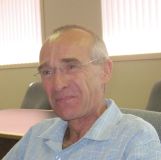 Derek Richmond, Manager of Engineering with the City of Courtenay, opened the session by describing the elements of a successful project outcome as portrayed in the image below. His emphasis was on the process that leads to success. He connected the dots to integrated watershed planning, ‘front-end loading’ in the development application process, and greenhouse gas reduction.
Derek Richmond, Manager of Engineering with the City of Courtenay, opened the session by describing the elements of a successful project outcome as portrayed in the image below. His emphasis was on the process that leads to success. He connected the dots to integrated watershed planning, ‘front-end loading’ in the development application process, and greenhouse gas reduction.
In summary, this ‘sharing and learning’ session initiated a conversation with the Comox Valley development community about collaboration, alignment and consistency.
Quotable Quote
 “The format was excellent for ‘stirring the pot’ as it allowed for a variety of ideas, questions and comments to flow easily and freely. The non-formal setting made everyone comfortable in sharing comments, whether positive or negative. This is certainly appreciated among the building and development community,” stated Kip Keylock, representing the Comox Valley Chamber of Commerce.
“The format was excellent for ‘stirring the pot’ as it allowed for a variety of ideas, questions and comments to flow easily and freely. The non-formal setting made everyone comfortable in sharing comments, whether positive or negative. This is certainly appreciated among the building and development community,” stated Kip Keylock, representing the Comox Valley Chamber of Commerce.
To Learn More:
Watch Derek Richmond’s opening comments:

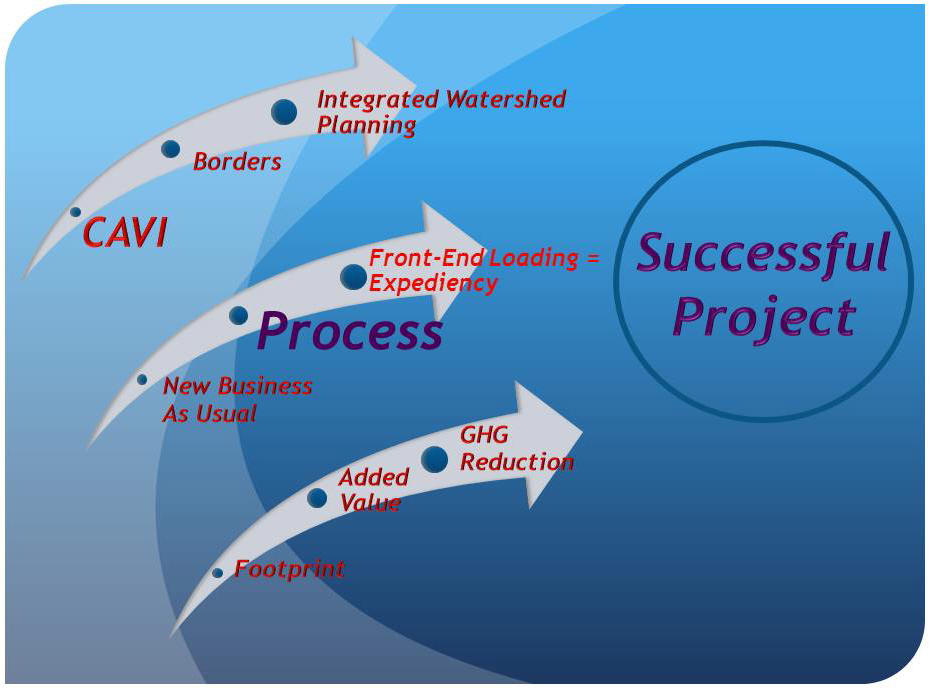
Major Regional Events that included a component delivered by Water Sustainability Action team members
2nd Annual Symposium on Planning for Resilience (held at University of BC, March)
Buzz Holling (1930-2019), considered the father of resilience research and recognized as one of the world’s leading ecologists, was the keynote speaker. Buzz Holling was a source of inspiration for the Water Sustainability Action Plan program.
The Symposium included a broad range of panel discussions with a diversity of perspectives from students, practitioners, and academics. One of the panels dealt with water. The panel theme was Increasing the Resiliency of Development to Water Crises. Kim Stephens represented the Action Plan.
TO LEARN MORE:
Download a copy of the panel agenda: Uncertain Water Supplies: Increasing the resiliency of development to water crises
Download a PDF version of the PowerPoint presentation by Kim Stephens titled Living Water Smart in British Columbia: Collaborate and ‘Design with Nature’ to Adapt to Climate Change.
Watch Kim Stephens explain why clear thinking is needed. The video duration is only 1:20 minutes. After that, watch him explain why small pieces accumulate to create the big picture (1:32 minutes).
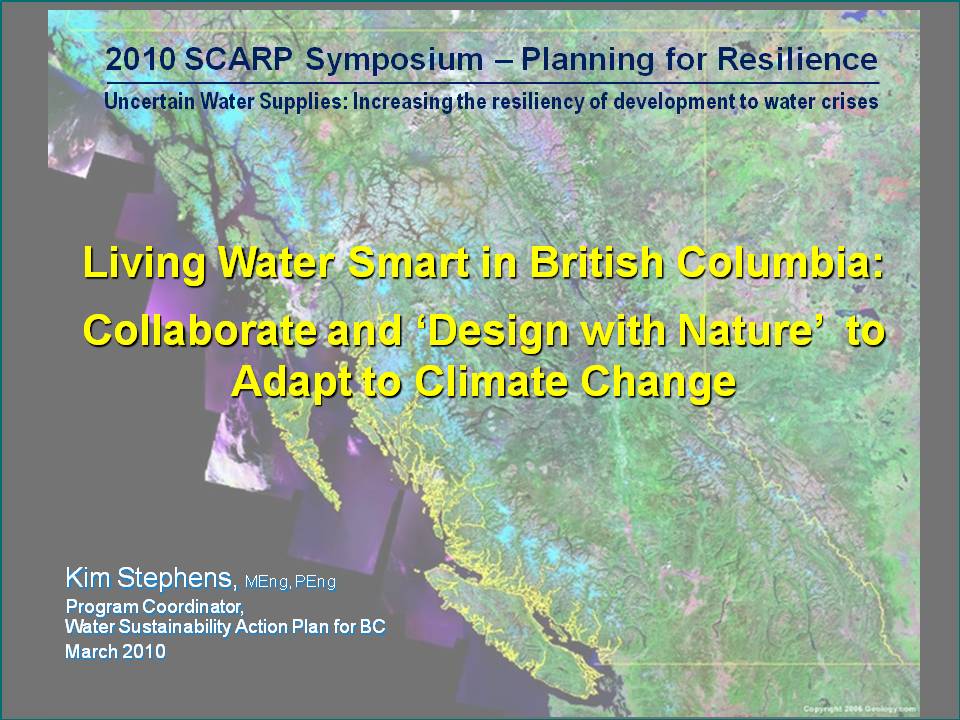

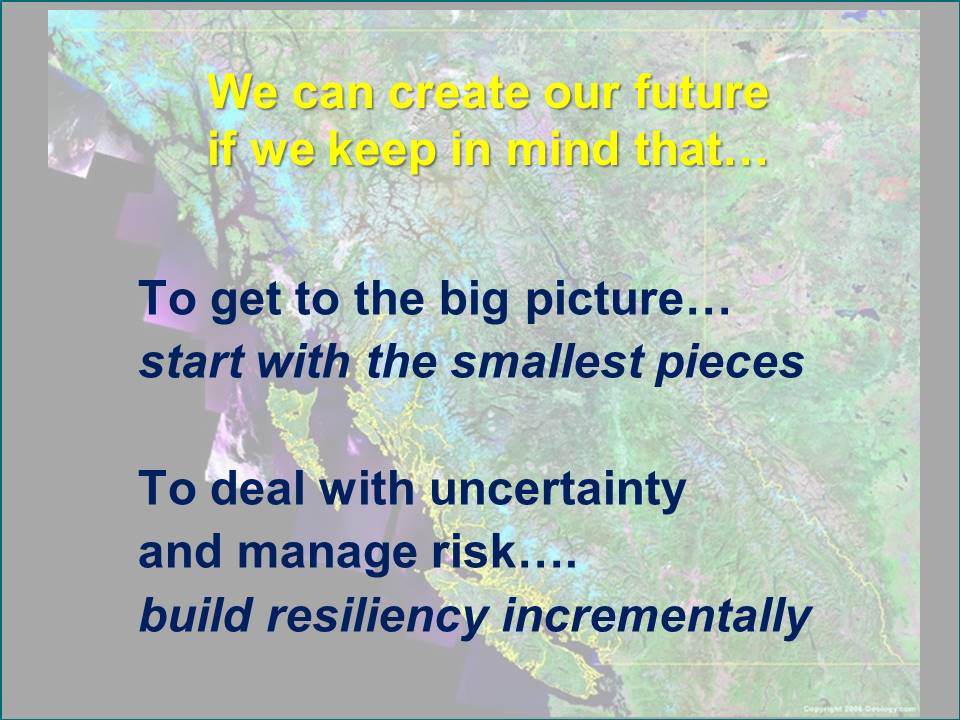
2010 Dialogue in Nanaimo (held in June)
The Dialogue in Nanaimo was structured around a water sustainability panel. Rather than talking heads, the panel engaged in a form of ‘improv theatre’ to feed off each other in spontaneously expressing key messages about water. This primed the audience for ‘small group’ dialogues in eight theme areas. The small groups dialogue were followed by a ‘big group’ dialogue.
The ‘Dialogue in Nanaimo’ was the venue for the formal launch of Beyond the Guidebook 2010. John Finnie, Regional District of Nanaimio, made the announcement on behalf of the ‘convening for action’ partnership. Kim Stephens, Ted van der Gulik and Eric Bonham were the other members of the Action Plan team who contributed to the day.
To Learn More:
Watch John Finnie.
2010 UBCM Annual Convention (held in Whistler, September)
The convention theme was “Forging Gold Standards” in keeping with the spirit of the Winter Olympics earlier in the year. A half-day water-centric study session that addressed climate change adaptation attracted 188 Mayors and Councillors. Three provincial initiatives were profiled: 1) BC’s Water Act Modernization Process, 2) Provincial Drought Response Plan, and 3) the Water Sustainability Action Plan.
This gathering of elected representatives commenced the formal rollout of Beyond the Guidebook 2010: Implementing a New Culture for Urban Watershed Protection and Restoration in British Columbia, with Glen Brown and Ray Fung providing the provincial and local government perspectives, respectively.
A Key Message: Embracing Shared Responsibility Leads to Outcome-Oriented Actions
Beyond the Guidebook 2010 synthesized a set of ten guiding principles that provide a framework for a successful local government implementation process. Ray Fung spoke to these principles in his part of the integrated presentation.
 Shared responsibility is a foundation piece for Beyond the Guidebook 2010. The law and policy component of the Outreach & Continuing Education Program described in the document produced a decision support tool that was branded as the Shared Responsibility Matrix.
Shared responsibility is a foundation piece for Beyond the Guidebook 2010. The law and policy component of the Outreach & Continuing Education Program described in the document produced a decision support tool that was branded as the Shared Responsibility Matrix.
“So, what we mean by shared responsibility is that everyone has a role, and everyone can act…. all levels of government, developers, regulators, bureaucrats, consultants, planners, engineers…. we all have a role,” stated Ray Fung.
To Learn More:
Download a copy of the Agenda for the study session on Sustainability Planning and Practices.
Watch the 1:32 minute long video of Ray Fung explaining Shared Responsibility.


Green Link 2010 (held in Vancouver, October)
The event attracted an international audience and “linked” the best of the best in Sustainable Communities, Finance, Technology and Government. It provided a high-profile platform for showcasing “Living Water Smart, British Columbia’s Water Plan”, and continuing the roll-out of “Beyond the Guidebook 2010″.
The Living Water Smart Panel comprised three members of the Action Plan team: Lynn Kriwoken, Ted van der Gulik and Kim Stephens.
To Learn More:
Download a copy of Living Water Smart, the integrated presentation by Lynn, Ted and Kim.
Watch Ted van der Gulik:

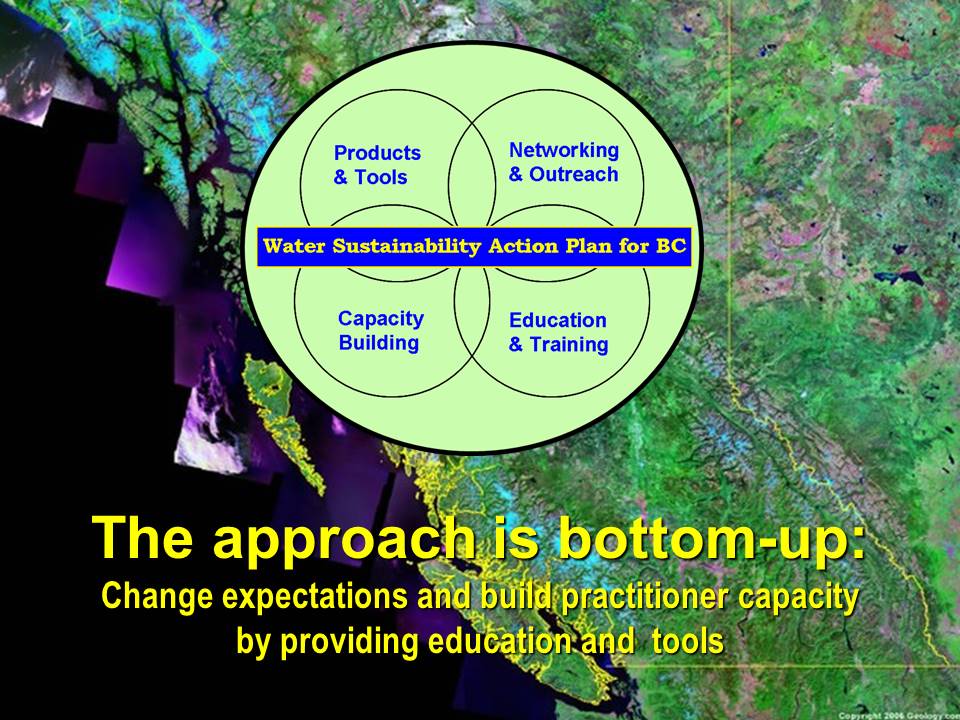
2010 State of the Island Economic Summit (held in Nanaimo, October)
A prime illustration of the collaboration that the Premier Gordon Campbell called for in his keynote address was the emerging relationship between the Vancouver Island Economic Alliance (VIEA) and CAVI, Convening for Action on Vancouver Island, a flagship program under the Action Plan umbrella.
VIEA and CAVI had come together because of a shared vision for water sustainability. The Summit included an afternoon breakout session organized by the Action Plan team (Kim Stephens, Tim Pringle, Eric Bonham, and John Finnie) and titled Water for Life and Livelihoods: What Drives Large-Scale Real Estate Development in the Mid-Island Region.
To Learn More:
Download a copy of the Lesson Plan for the Action Plan breakout session.
Download a copy of the integrated presentation by Kathy Bishop, Kim Stephens, Eric Bonham, Tim Pringle and John Finnie.
Watch Tim Pringle describe what drives large-scale real estate development in the Mid-Island region.

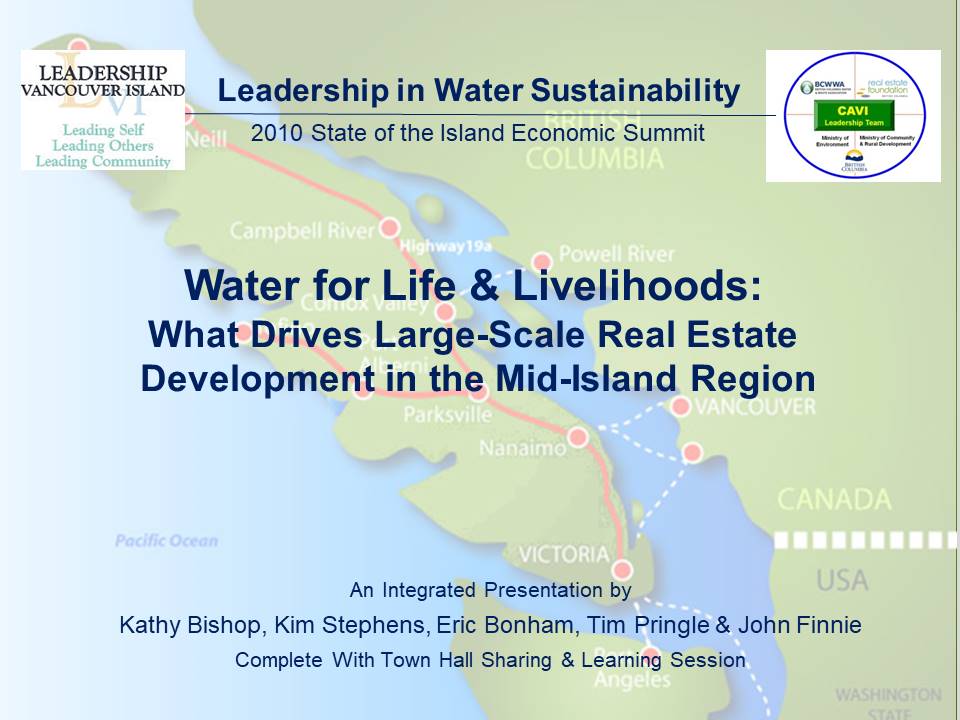
2010 From Rain to Resource Workshop (held in Kelowna, October)
The workshop provided a unique opportunity for municipal engineers and planners and elected leaders to participate in a shared learning experience. The workshop format and content was designed to facilitate a common understanding between technical and policy people of the issues and solutions around rainwater management.
These Action Plan team members provided much of the core content: Kim Stephens, Ted van der Gulik, Richard Boase, Remi Dube, Jim Dumont, Kevin Lagan, and Chris Jensen.
To Learn More:
In February 2011, the Okanagan Basin Water Board released a report that summarizes a comprehensive set of recommendations that came out of the workshop. The report also provides an overview of the topics and case studies that were presented. To download a copy, click on From Rain to Resource 2010: Managing Stormwater in a Changing Climate.
Download the presentation by Ted van der Gulik on Beyond the Guidebook 2010.
Watch Kelowna Mary Sharon Shepherd connect the dots to Beyond the Guidebook 2010:


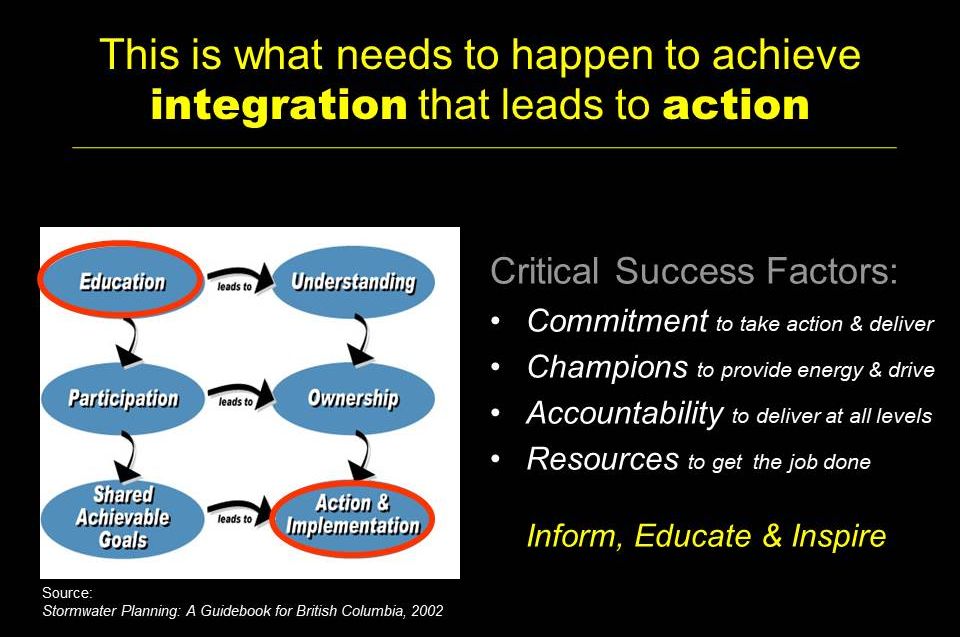
2010 BC Hydro PowerSmart Forum (held at Vancouver Convention Centre, October)
The Power Smart Forum is BC’s leading energy conservation conference, attracting delegates, speakers and industry experts from across North America. The technical program for the Power Smart Forum has three streams: Commercial / Institutional, Industrial, Community / Government. The last stream included a session delivered by the Action Plan team.
Beyond the Guidebook 2010
The 6-person Action Team comprised Kim Stephens, Ray Fung, Ted van der Gulik, Glen Brown, Eric Bonham and Mike Tanner who collaborated to deliver a module built around Beyond the Guidebook 2010. The presentation was then delivered by Kim, Ray and Mike. Their key message was:
“We now have the tools and experience to ‘design with nature’. We believe that BC is now at a tipping point. Implementation of a new culture for urban watershed protection and restoration is within our grasp.”
 “The waterbucket.ca website was developed to support the Action Plan, and was launched with a ministerial announcement in 2005. The site is owned by the Partnership for Water Sustainability. What makes the website distinctive is that it is three-dimensional. First, it is a news magazine for raising awareness of success stories. Secondly, it has a growing library of information and resources on the BC experience. And thirdly, it houses a number of ‘Made in BC’ tools used by practitioners on the ground,” explained Mike Tanner, Chair of the Waterbucket.ca Partnership.
“The waterbucket.ca website was developed to support the Action Plan, and was launched with a ministerial announcement in 2005. The site is owned by the Partnership for Water Sustainability. What makes the website distinctive is that it is three-dimensional. First, it is a news magazine for raising awareness of success stories. Secondly, it has a growing library of information and resources on the BC experience. And thirdly, it houses a number of ‘Made in BC’ tools used by practitioners on the ground,” explained Mike Tanner, Chair of the Waterbucket.ca Partnership.
To Learn More:
Download a copy of the Abstract for the Action Plan session.
Download a copy of the integrated presentation by Kim Stephens, Ray Fung and Mike Tanner that guided the sharing and learning at the BC Hydro PowerSmart Forum in November 2010.
Watch the video (10:30 minutes) of Mike Tanner’s part of the tag-team presentation:


